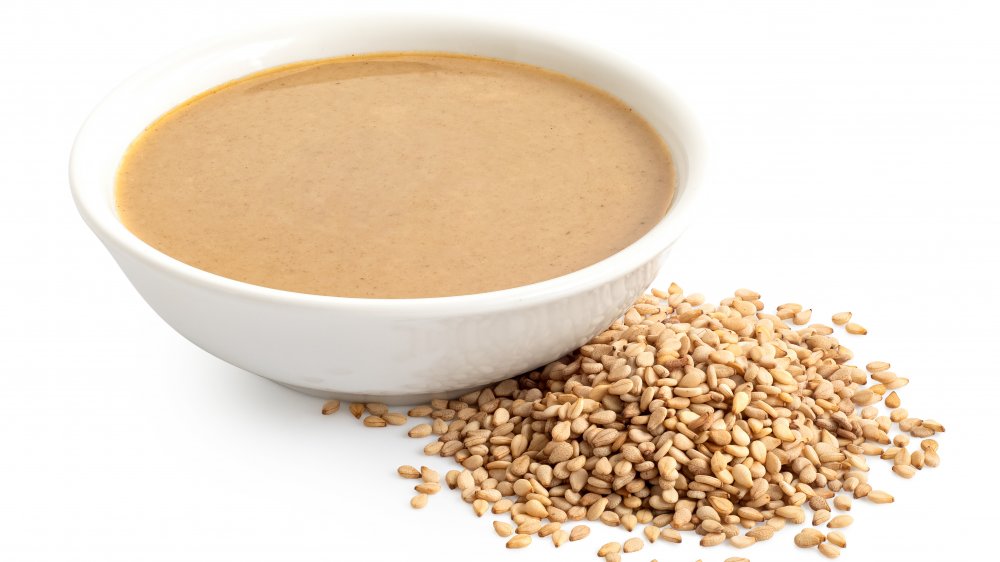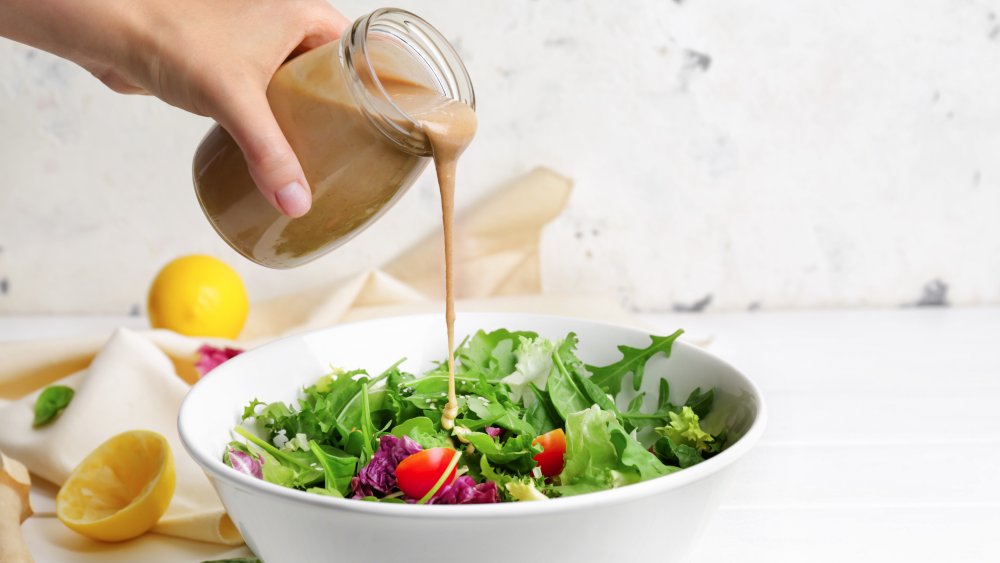What Is Tahini And How Do You Use It?
Tahini used to just be considered an essential hummus ingredient, but thanks to more vegetarian-friendly, plant-forward menus, we're seeing just how versatile tahini can be. Created from grinding toasted sesame seeds with oil, tahini is now found in a plethora of products and recipes and can be used just like any other nut butter, according to Bon Appetit. So, while it will always be awesome in hummus, tahini's hearty and nutty flavor is also perfect for spreading on toast, mixing into cookies and brownies, or adding to dressings and dips.
Not only is tahini delicious, but it's also nutritious. Tahini contains healthy monounsaturated fatty acids, is rich in antioxidants, and is easy to make at home. Simply blend together toasted sesame seeds and an oil such as avocado or olive oil. One tablespoon of tahini contains 90 calories, 3 grams of protein, 8 grams of fat, 3 grams of carbohydrates, and 1 gram of fiber (via Healthline).
How to use tahini in everyday recipes
A popular ingredient in diets such as keto and paleo, tahini is regularly touted for its health benefits (via Eat This, Not That!). If you are allergy-prone, however, new research suggests that an estimated 1.6 million people could be allergic to sesame seeds, and in turn, sesame paste, such as tahini (via NPR). If you're clear of allergies, there are many ways to integrate tahini into your daily or weekly routine.
Try tahini on pancakes or yogurt with a squeeze of honey or maple syrup, mix it with miso, soy sauce, and sesame oil for a quick protein marinade, or add a dollop to your potato salad (via EatingWell). One of the easiest and most creative sweets to make with tahini is Israeli tahini halvah. You're free to add whatever ingredients you like to the recipe, but the basic recipe calls for tahini, honey, vanilla extract, and pistachios, according to The Spruce Eats. They say this dessert can be kept in the refrigerator for months, but why wait?

